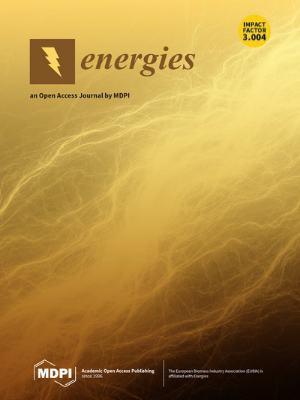考虑聚类和元优化的微电网保护协调
IF 3.2
4区 工程技术
Q3 ENERGY & FUELS
引用次数: 0
摘要
本文结合无监督学习技术、元搜索优化和定向过流继电器(DOCR)的非标准特性,探讨了微电网的保护协调问题。微电网可能在不同的拓扑结构或运行场景下运行。在这种情况下,采用 K 均值、平衡迭代还原和分层聚类(BIRCH)、高斯混合和分层聚类等聚类技术来对微电网的运行场景进行分类。这些情景是根据运行中的发电类型和网络拓扑结构预先确定的。然后,使用四种元启发式技术,即遗传算法(GA)、粒子群优化(PSO)、入侵杂草优化(IWO)和人工蜂群(ABC)来解决每个运行场景聚类的协调问题。此外,还使用了 DOCR 的非标准特征。群组的数量被限制在商用 DOCR 设置组的最大数量。在优化模型中,每个继电器都根据三个优化变量进行评估,即:时间乘数设置(TMS)、插头设置乘数上限(PSM)和标准特性曲线(SCC)。通过在基准测试微电网上进行的各种测试,证明了所提方法的有效性。本文章由计算机程序翻译,如有差异,请以英文原文为准。
Microgrid Protection Coordination Considering Clustering and Metaheuristic Optimization
This paper addresses the protection coordination problem of microgrids combining unsupervised learning techniques, metaheuristic optimization and non-standard characteristics of directional over-current relays (DOCRs). Microgrids may operate under different topologies or operative scenarios. In this case, clustering techniques such as K-means, balanced iterative reducing and clustering using hierarchies (BIRCH), Gaussian mixture, and hierarchical clustering were implemented to classify the operational scenarios of the microgrid. Such scenarios were previously defined according to the type of generation in operation and the topology of the network. Then, four metaheuristic techniques, namely, Genetic Algorithm (GA), Particle Swarm Optimization (PSO), Invasive Weed Optimization (IWO), and Artificial Bee Colony (ABC) were used to solve the coordination problem of every cluster of operative scenarios. Furthermore, non-standard characteristics of DOCRs were also used. The number of clusters was limited to the maximum number of setting setting groups within commercial DOCRs. In the optimization model, each relay is evaluated based on three optimization variables, namely: time multiplier setting (TMS), the upper limit of the plug setting multiplier (PSM), and the standard characteristic curve (SCC). The effectiveness of the proposed approach is demonstrated through various tests conducted on a benchmark test microgrid.
求助全文
通过发布文献求助,成功后即可免费获取论文全文。
去求助
来源期刊

Energies
ENERGY & FUELS-
CiteScore
6.20
自引率
21.90%
发文量
8045
审稿时长
1.9 months
期刊介绍:
Energies (ISSN 1996-1073) is an open access journal of related scientific research, technology development and policy and management studies. It publishes reviews, regular research papers, and communications. Our aim is to encourage scientists to publish their experimental and theoretical results in as much detail as possible. There is no restriction on the length of the papers. The full experimental details must be provided so that the results can be reproduced.
 求助内容:
求助内容: 应助结果提醒方式:
应助结果提醒方式:


